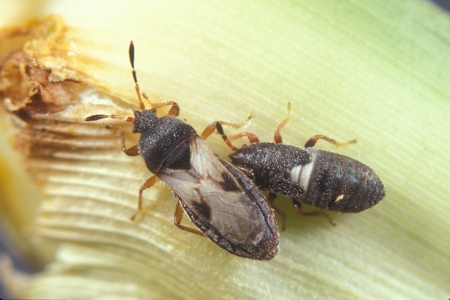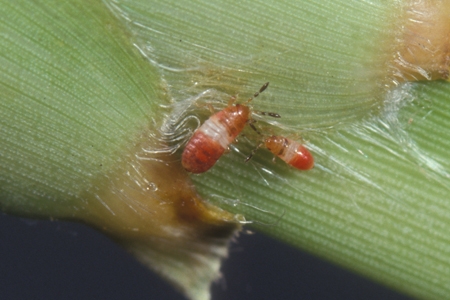Home » Bugs » Lawn Pests »
Active Seasons



Appearance and Size Facts
- Black bodies with white triangular patterns on the wings that cover the back
- Have an hourglass or crossed-arms pattern
- Juvenile chinch bugs progress from red to brown before finally becoming winged adults with the black and white coloration
- Size: Range from 1/8 to 1/6 inch in length
- Prefer hot, dry, sunny lawns
- They are known to cause extensive damage quickly
We offer pest control for chinch bugs in the following locations and their surrounding areas:

Behavior and Habitat of Chinch Bugs
Female chinch bugs deposit over 250 eggs on average in their lifetime. They lay their eggs in turf on leaf blades, close to where the plant contacts the soil. During the summer months, the eggs hatch between 6 to 13 days, with an hatching time of 11 days. This process can last a month or more during the winter months. The eggs are small and oval shaped, with a blunt end from which four small projections extend.
Chinch bugs like hot, dry, sunny areas in lawns. They cause extensive damage quickly, especially to St. Augustine turfgrass. Lawns suffering from chinch bug infestations have large patches of irregular, yellowish, stunted, and wilted grass. Chinch bugs suck the sap from grass blades, at the same time injuring the grass, causing it to wither and die (leaving brown areas of turf).

Signs of Infestation of Chinch Bugs
To check for chinch bugs, push a bottomless can into the ground near the edge of a dead patch of lawn and fill it with water. If chinch bugs are present, they will usually float to the surface within a few minutes. Chinch bug activity also usually begins near impervious surfaces, such as driveways, sidewalks, and curbs.

Tips for Prevention of Chinch Bugs
Water the lawn deeply, but infrequently, during warmer months, provide shade over the lawn, and avoid overfertilizing the lawn.




